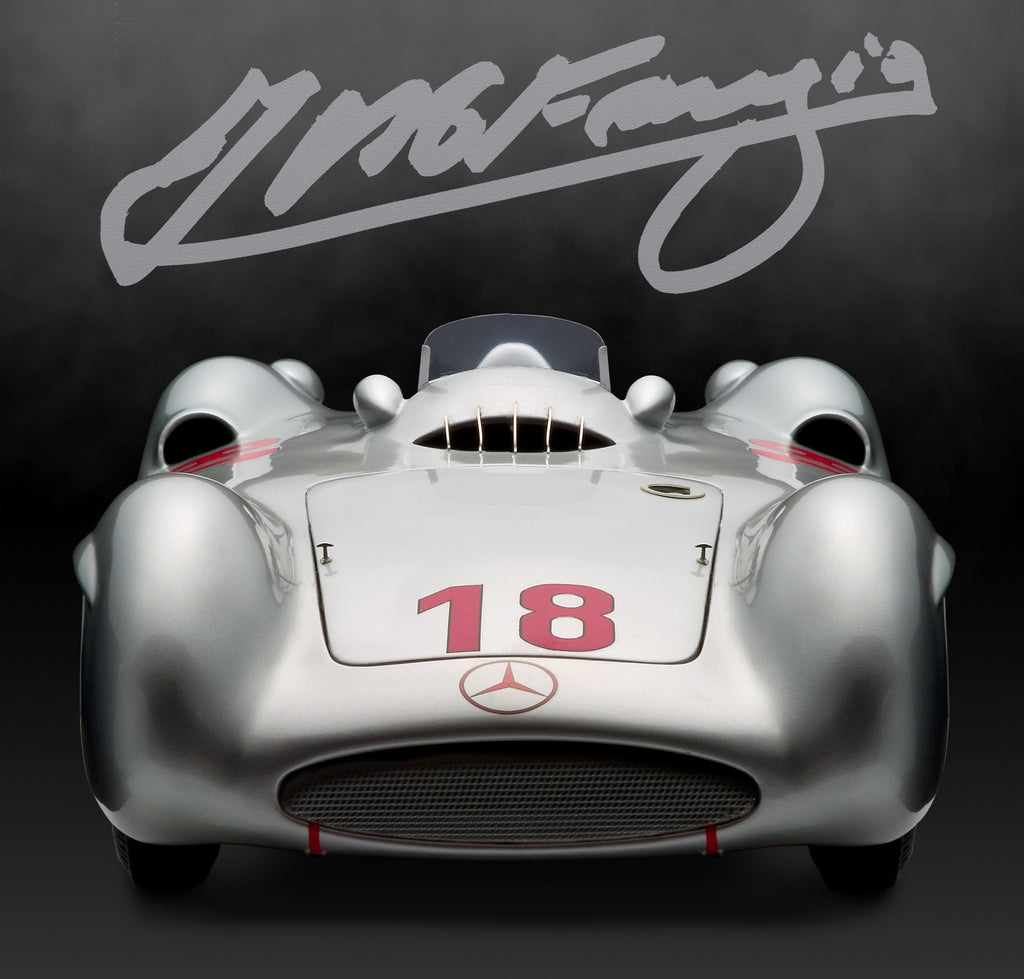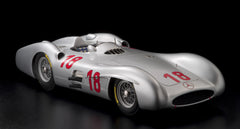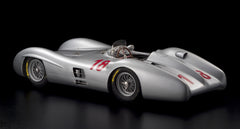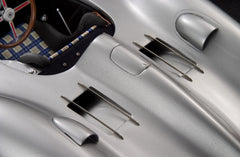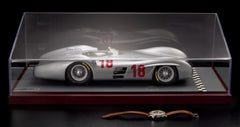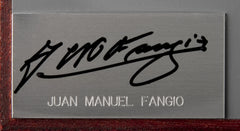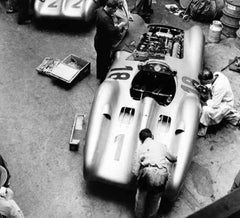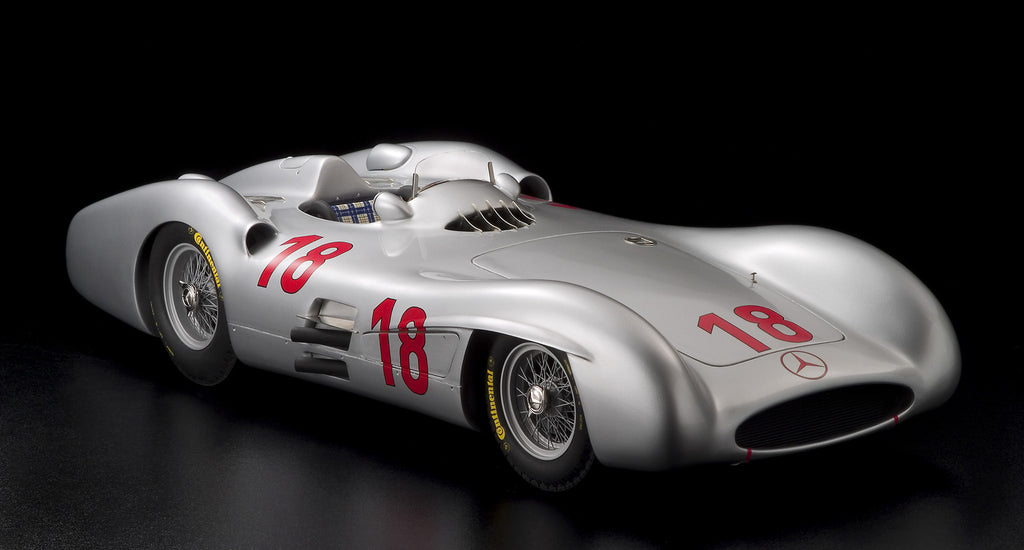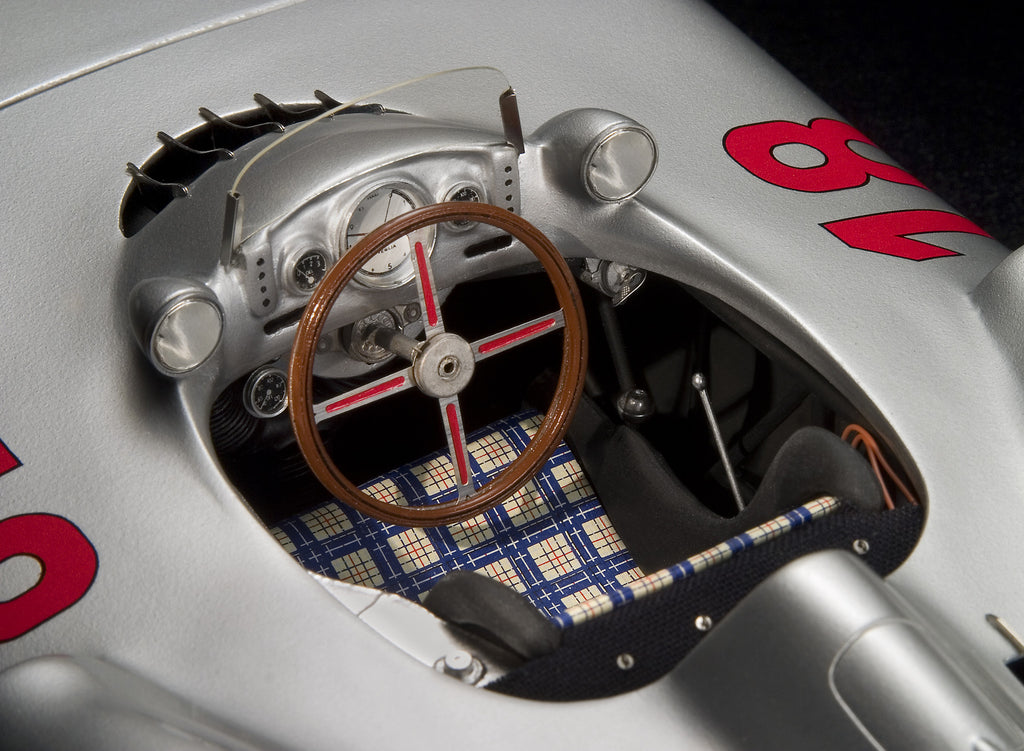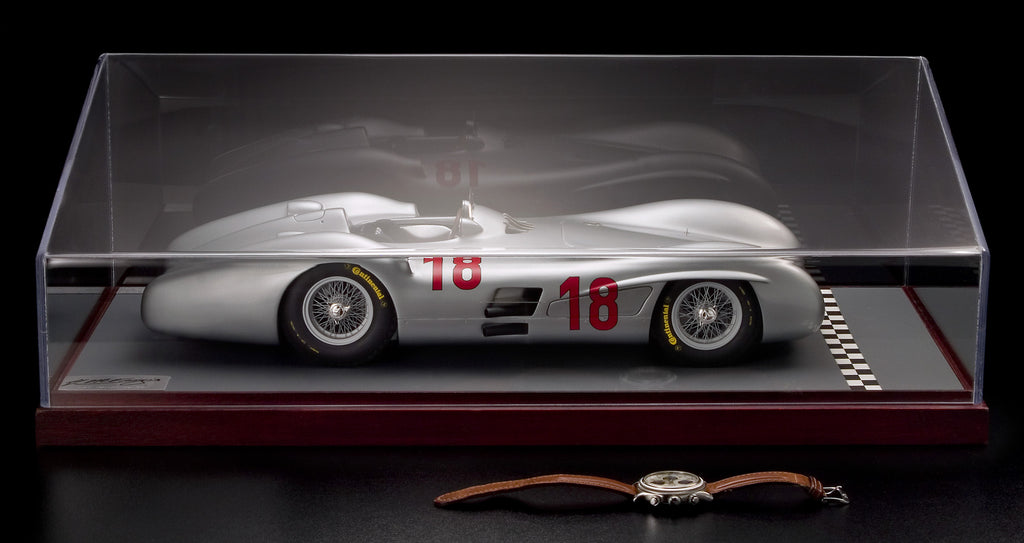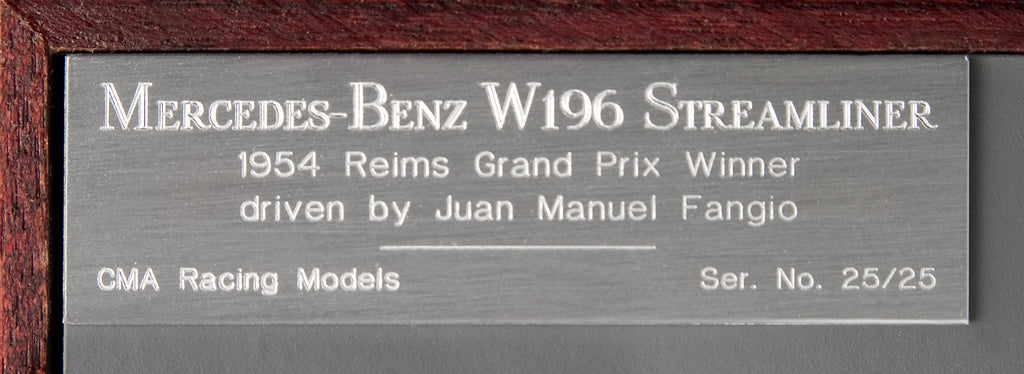Mercedes W196 Streamliner, Reims GP Winner, 1954 CMA Models 1:10 Scale
$5,000.00
In a remarkable turn of good fortune, Aeromobilia has obtained another example of this landmark model built by CMA. It is very much like lightning striking twice, as the total number ever built was 25. This new arrival is #22 and is in pristine condition. We don't expect to ever have another on offer due to its rarity. For the serious collector of extraordinary model automobiles.
In today's world of hyper-technology, the science of aerodynamics is often taken for granted. Whether utilized in aircraft, boats, racing cars, bicycle and motorcycle racing, or even our daily transportation, products are carefully designed to slip efficiently through an ocean of air.
This wasn't always the case however. Even as late as the mid-20th Century, aerodynamics and 'streamlining' was something of a 'Black Art'. Springing from the desire to make World War I fighter aircraft faster and more maneuverable, designers investigated every conceivable method to make their planes more slippery. After the war ended, and with prosperity's return, the burgeoning science of aerodynamics was applied to racing cars to gain an edge over the competition. 'Streamlining' became so ubiquitous as a concept that a whole new era of design was born; Art Deco.
During the mid to late 1930's, Mercedes and Auto Union dominated European Grand Prix racing, partly by being bankrolled by the aggressive German government. In an effort to garner even more prestige, both companies vied to break the world speed record on a public motorway. The newly-completed Autobahn was the perfect venue. The competition created some of the most unusual (and beautiful) envelope bodies ever seen, often utilizing contemporary Formula One underpinnings as a base. In January, 1938, Rudolph Caracciola set out with his Mercedes W125 'Rekordwagen' and set a 432.692 kph (268.8623 mph) record flying kilometer time which still stands to this day!
The Second World War interrupted racing again for several years, and it was not until 1954 that Mercedes reentered the Grand Prix circus, but they did so with a 'bang!'. Discovering a loophole in the current rule book, they secretly clad two of their W196 chassis with envelope bodies employing lessons learned from their previous record attempts. The result shocked an unprepared racing community, unleashing a new generation of 'Silver Arrows' upon the world stage.
Mercedes recruited world champion Juan Manuel Fangio along with Karl Kling to pilot the new 'streamliners', which they skillfully did in the car's debut at the French Grand Prix at Reims. The new cars finished 1-2, setting the tone for Mercedes dominance of the following two years of international racing. It was discovered that the 'streamliners' were best suited to long distance tracks such as Silverstone and Monza, with an open-wheel version available on the shorter, twistier courses. With the W196 in his more than capable hands, Fangio won his second and third world championships in 1954-1955.
Forty-five years on, our good friend Marshall Buck, of CMA Models Inc. created a remarkable tribute to Fangio and Mercedes racing with the release of his 1:10 scale recreation of the 1954 Reims-winning W196 Streamliner. Superlatives become commonplace when describing this exquisite piece. Created in a worldwide edition of only 25 examples, ours is #25/25; obviously the very last one built.
On full-size cars, as well as models, silver paintwork is generally regarded as the most difficult to apply successfully, since every curve and nuance of the bodywork focuses attention on it. Here, the W196's fluid body panels only serve to highlight the perfect paint, allowing the eye to fully enjoy all that undulating sheet metal. Although a curbside model, there is no lack of detail to sour a close examination. The body openings and vents are correct and crisp, and are neatly framed with precise photo-etch 'ribs', faithful to the original. The lovely wire wheels are hand laced and painted, while their surrounding rubber features accurate tread patterning and Continental race tire lettering.
The cockpit is suitably Teutonic, with a centrally-mounted Veglia rev counter, and with ancillary gauges flanking the four spoke wood-rimmed steering wheel.The chassis' tubular framework is visible on either side of the plaid cloth racing seat, and all the correct levers and switchgear are in place. Using a flashlight to illuminate the footwell, everything is there as well. Corrugated flexible tubing routes fresh air from the cowl vent, while the metal foot pedals glint in the far recesses.
Remarkably, this model is supplied with not one, but two hand-signed Juan Manuel Fangio plaques. One is affixed to the underside of the model (along with the edition number and the date), while the other accompanies a CMA Models plaque on the impressive 'finish line' display base, complete with slanted Perspex cover. The signatures are not to be underestimated. A signed Fangio black and white photograph (featuring this car incidentally) sold at Bonham's Greenwich June auction for nearly $2000.00!
We usually shy away from offering investment advice to our clients, but if past performance is considered, this CMA masterpiece will only accelerate in value. Its extreme rarity, ultra-desirability, and perfect assembly allow our Streamliner to surmount the 'must have' list of any serious collector.

